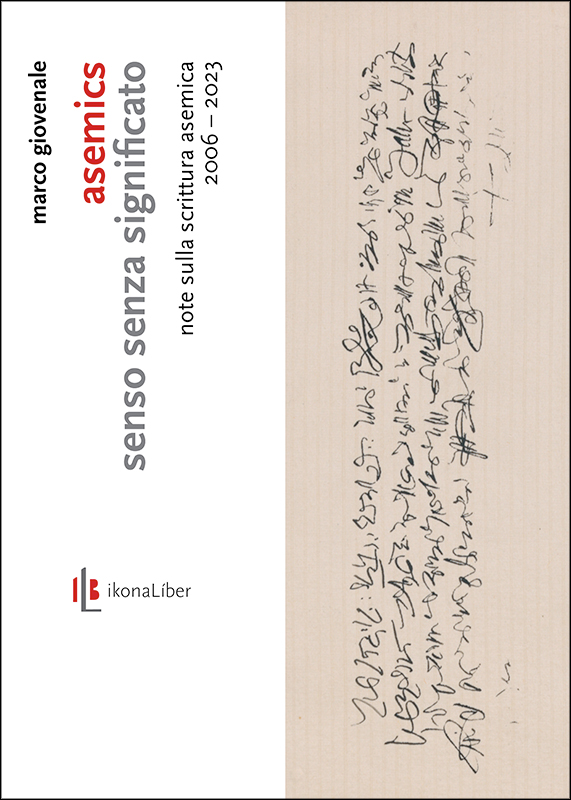Venerdì 3 marzo, alle ore 18:00
a Roma, presso lo Studio Campo Boario
(Viale del Campo Boario 4a)
Giuseppe Garrera presenta
ASEMICS. Senso senza significato
di Marco Giovenale
(IkonaLíber, 2023)
http://www.ikona.net/marco-giovenale-asemics-senso-senza-significato
Questa sequenza di annotazioni, fuori da ogni ipotesi di esaustione, propone un possibile itinerario attraverso la storia delle espressioni “scrittura asemica” (o “asemantica” o “desemantizzata”) e “asemic writing”; e inoltre offre alcuni elementi di teoria che configurano l’identità di questa pratica artistica come «macchina di disorganizzazione e disintegrazione del significato ad opera del senso stesso».
Libro con immagini di:
Rosaire Appel, Anneke Baeten, May Bery, Marcia Brauer, Axel Calatayud, Cecelia Chapman, Tim Gaze, Ariel González Losada, Michael Jacobson, Satu Kaikkonen, Paul Klee, Karri Kokko, Jim Leftwich, Arturo Martini, John McConnochie, Miriam Midley, Stephen Nelson, Laura Ortiz, Ekaterina Samigulina / Tae Ateh, Lucinda Sherlock, Jay Snodgrass, Lina Stern, Miron Tee, Cecil Touchon
Evento facebook:
https://www.facebook.com/events/731660138335394
Ulteriori informazioni:
http://www.ikona.net/marco-giovenale-asemics-senso-senza-significato/
https://slowforward.net/2023/02/20/asemics-senso-senza-significato-ikonaliber-cenni-di-storia-e-teoria-dellasemic-writing/
Anteprima:
https://issuu.com/ikonaliber/docs/asemics_anteprima
Pagina facebook:
https://www.facebook.com/giovenale.asemics.ikonaliber
_






